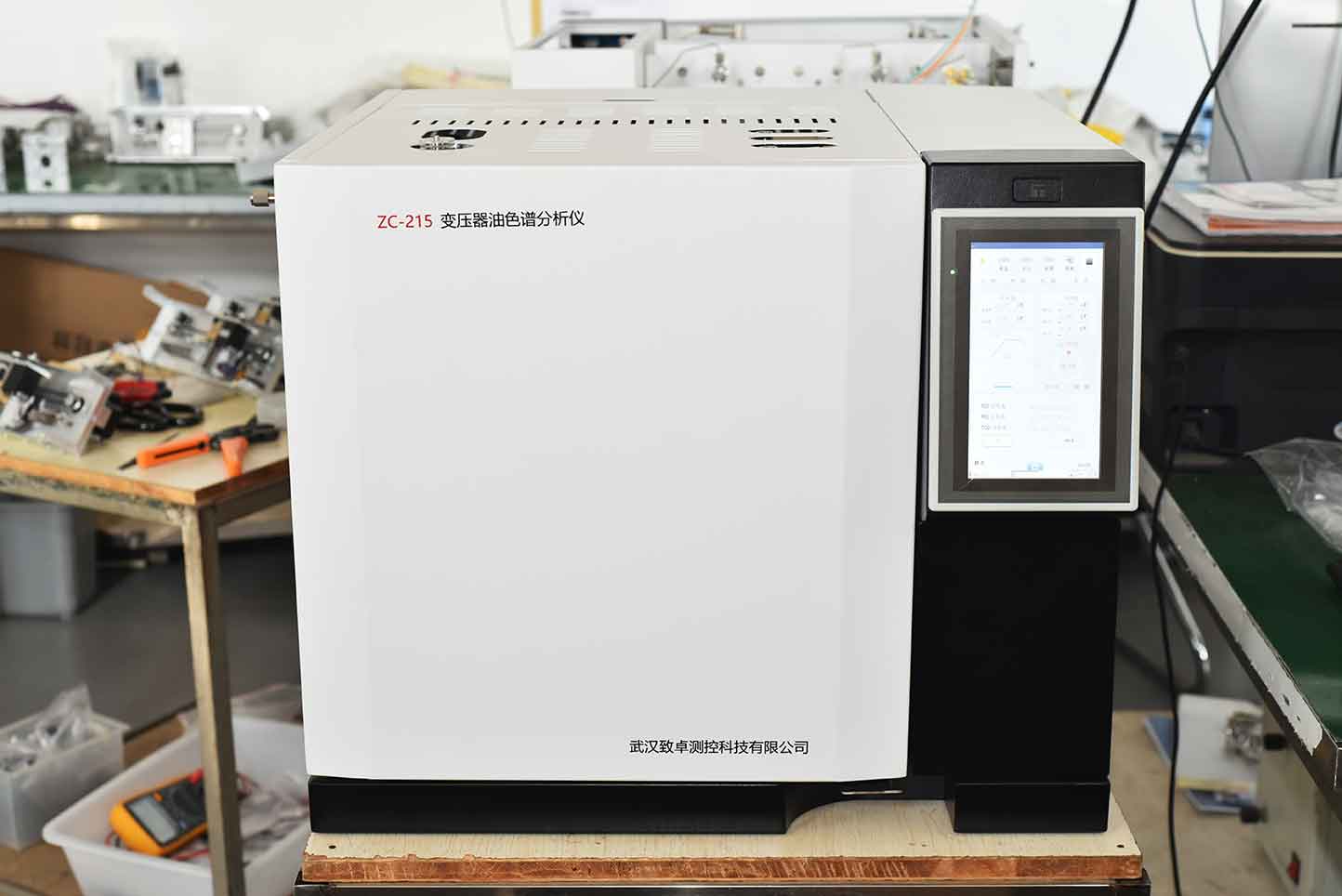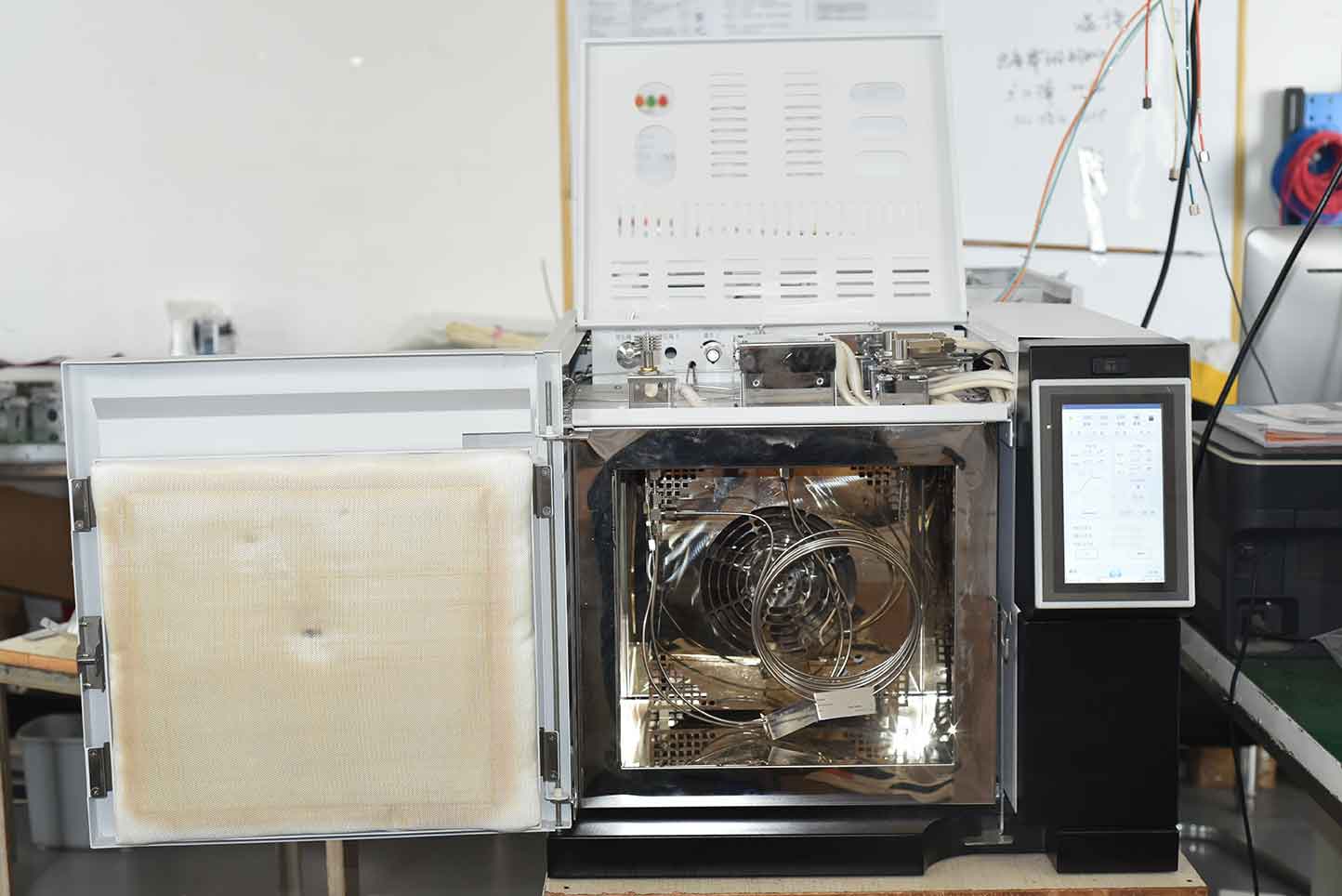The oil chromatography analysis method is a method that has been developed by the power operation department since the formation of the preventive maintenance system. By regularly analyzing the gas components, content, and gas production rate dissolved in oil of transformers or other oil consuming equipment in operation, it can detect potential faults inside transformers as soon as possible and determine whether they will endanger safe operation. This method takes transformer oil back to the laboratory for analysis using a gas chromatograph, which is not affected by complex electromagnetic field interference on site. It can detect defects such as local overheating in oil equipment that cannot be detected using dielectric loss factor tests and partial discharge methods.

The handling measures when abnormal transformer oil chromatogram data is found include:
1. For transformers that are newly put into operation or refilled with oil, if the gas growth is rapid in the short term but does not exceed the attention value, it can also be determined that there is an internal abnormality.
2. For reactors with a voltage of 330kV and above, attention should also be paid when trace amounts (<1uL/AL) of acetylene are present. If the gas analysis shows abnormalities but it is determined that it will not endanger the safety of the iron core and winding, it can be operated in situations where the attention value is exceeded significantly.
3. There are many factors that affect the hydrogen content in current transformers and capacitive bushing oil. Some hydrogen content may be lower than the attention value, but there is a growing trend that should be taken into account. Some only have hydrogen content exceeding the attention value, and if there is no obvious growth trend, it can be judged as normal.
4. When the gas chromatography analysis in the transformer body oil exceeds the attention value, tracking analysis should be conducted, based on the size and growth trend of each characteristic gas and total content, combined with gas production rate and comprehensive judgment. Shorten the tracking cycle if necessary.
5. When the gas production rate in the transformer exceeds the dissolution rate, a portion of the gas will enter the gas relay or oil storage tank. When gas appears in the gas relay, analyzing the gas inside helps to make a judgment on the condition of the equipment. Similarly, analyze the gas dissolved in oil to detect potential faults within the transformer as early as possible and monitor the development of faults at any time.
6. Based on the oil chromatographic content, the DL/T 722-2014 "Guidelines for Analysis and Judgment of Dissolved Gases in Transformer Oil" is applied, combined with the results of previous tests of transformers (such as winding DC resistance, no-load characteristic test, insulation test, partial discharge measurement, and oil micro water measurement), and combined with the structure, operation, and maintenance of transformers, a comprehensive analysis is conducted, The nature and location of the fault can be determined. (Different handling measures can be taken for the equipment according to the specific situation, such as shortening the test cycle, strengthening monitoring, limiting load, arranging internal inspections in the near future, or immediately stopping operation, etc.).
7. In some cases, some gases may not be caused by equipment malfunctions. If oil contains water, it can react with iron to generate hydrogen; overheating of the interlayer oil film of the iron core can also generate hydrogen; new stainless steel may also adsorb hydrogen during processing or welding and slowly release it into the oil. Especially when the temperature is high and there is dissolved oxygen in the oil, some paints (alkyd resin) in the equipment may even produce a large amount of hydrogen under the understanding of some stainless steel; some modified polyimide insulating materials can also generate some gases to dissolve in the oil. Oil can also generate certain gases under sunlight. During equipment maintenance, oil exposed to the air can absorb c02 and other substances in the air. Some oils initially produce hydrogen gas (within the allowable range) and gradually decrease thereafter. Therefore, different gas properties should be treated separately.
8. When the oil chromatography data exceeds the attention value, attention should also be paid to eliminating the possibility of oil leakage from the switching switch oil chamber in the on-load voltage regulating transformer into the transformer body oil tank, or the impact of floating potential discharge when the switch is selected to operate in a certain position; the equipment has had a malfunction before, but after troubleshooting, the insulation oil has not been completely degassed, and some residual gases still remain in the oil; the equipment is repaired with oil; the original injected oil contains certain gases, and other possibilities.

ZC-215 insulation oil gas chromatography analyzer is a technology for separating and analyzing multi-component mixtures. It mainly utilizes the differences in boiling points, polarity, and adsorption coefficients of each component in the sample in the chromatographic column to separate each component in the column, and conducts qualitative and quantitative analysis of the separated components. This instrument is designed in accordance with the requirements of the "Determination of Dissolved Gas Components in Insulating Oil (Chromatography)" in the power system. It adopts microcomputer automatic control, full keyboard operation, and large screen LCD display. It has the characteristics of high temperature control accuracy, stable and reliable performance, high sensitivity, and good repeatability. The instrument can be used for internal fault detection of oil and gas equipment in power system, cooling medium analysis of hydrogen cooled generator, Sulfur hexafluoride impurity analysis, boiler flue gas analysis, natural gas analysis and environmental monitoring analysis. It can be used for both specialized analysis and general analysis, making it an effective equipment for gas analysis in petroleum, chemical, mining, and other systems.
Kvtester Electronics Technology Co.,Ltd. is a high-tech enterprise specializing in power testing, testing, research and development, production, and sales of testing equipment. It has been engaged in the electrical testing industry for many years, and its products are of high quality. We welcome customers to come and purchase.






